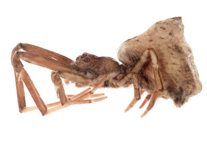Abstract
Holistic morphometrics is a term implying complete shape characterization of all of the structural parts of an organism. The skeleton of an echinoid is comprised of hundreds of individual plates arranged in a closed 3-dimensional mosaic forming the test. GIS software and techniques were used to generate topologically correct digital models of an ontogenetic series of specimens of the sand dollar echinoid Echinarachnius parma. Plate growth can be considered in proportion to overall skeleton growth, resulting in a linear model of relative growth. Alternatively, separate logistic equations can be fit to the ontogenetic series of homologous plate areas using nonlinear least squares regression to result in a model for instantaneous growth. The linear and logistic parameters of the models describe the allometric growth of plates from different viewpoints. Growth is shown to fall into characteristic patterns defining distinct plate growth domains associated with development of the imago (larval) skeleton just prior to metamorphosis, early growth associated with expansion of the corona and fold-over (forming the flattened body form), juvenile growth and formation of petals, and adult growth. Functions of growth, plate translocation, plate juxtaposition between aboral and oral surfaces, and relationships with internal buttressing are quantified. Results offer explanations for general skeletal symmetry, distinction between ambulacral and interambulacral growth, the relationship of growth to internal buttressing, existence of a distinct petalodium, and anterior-posterior asymmetry during development. The parametric values of growth functions derived from the results are a basis for computational modeling of growth and development in sand dollars.

